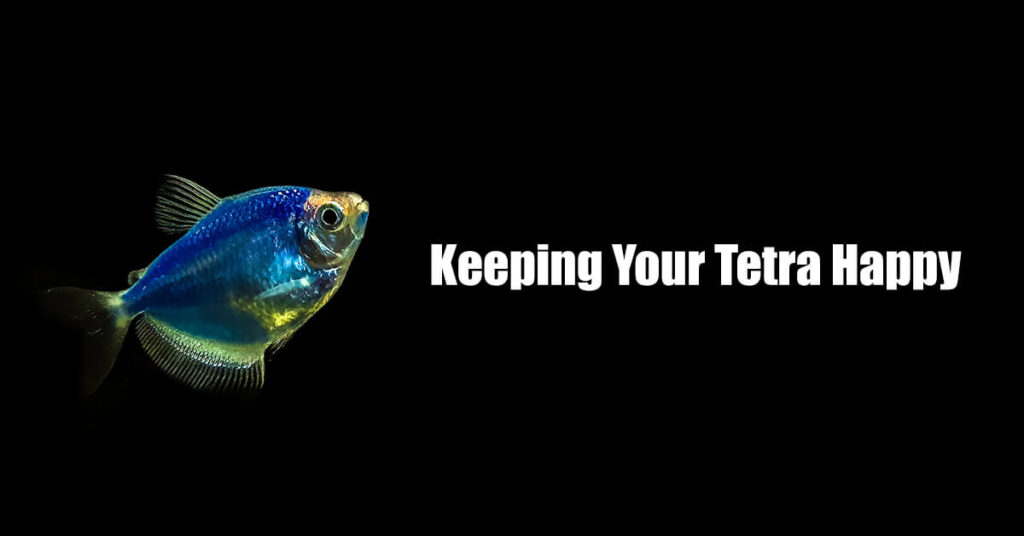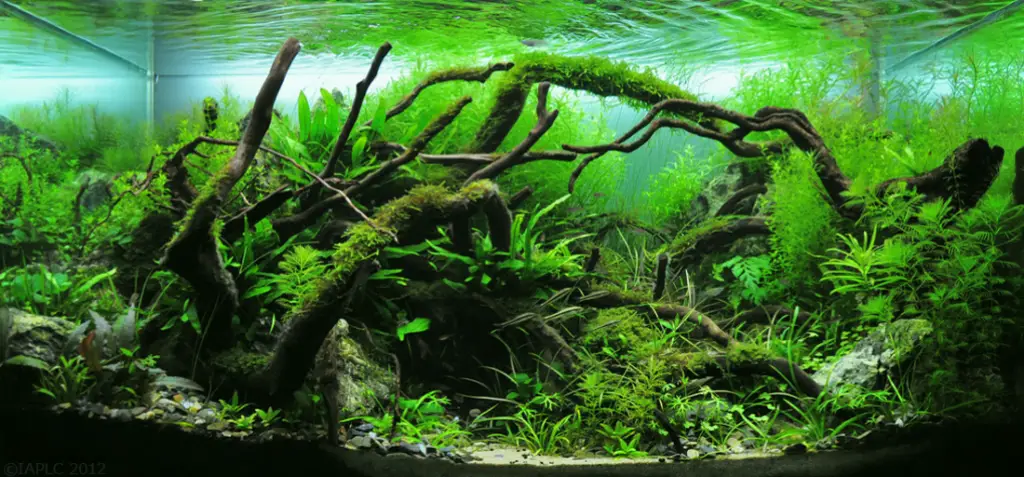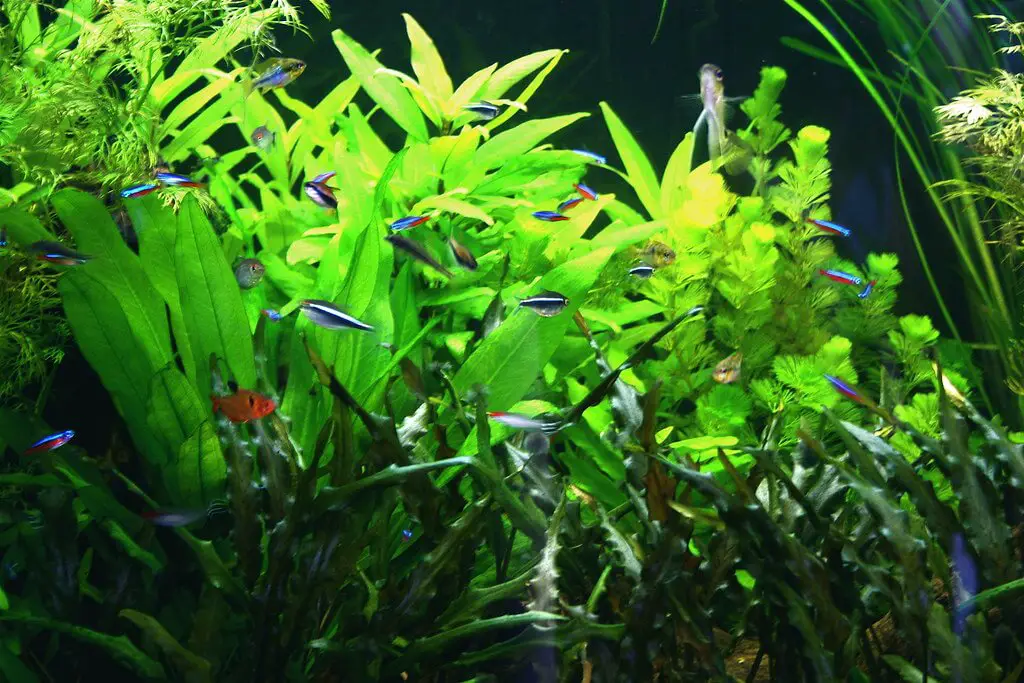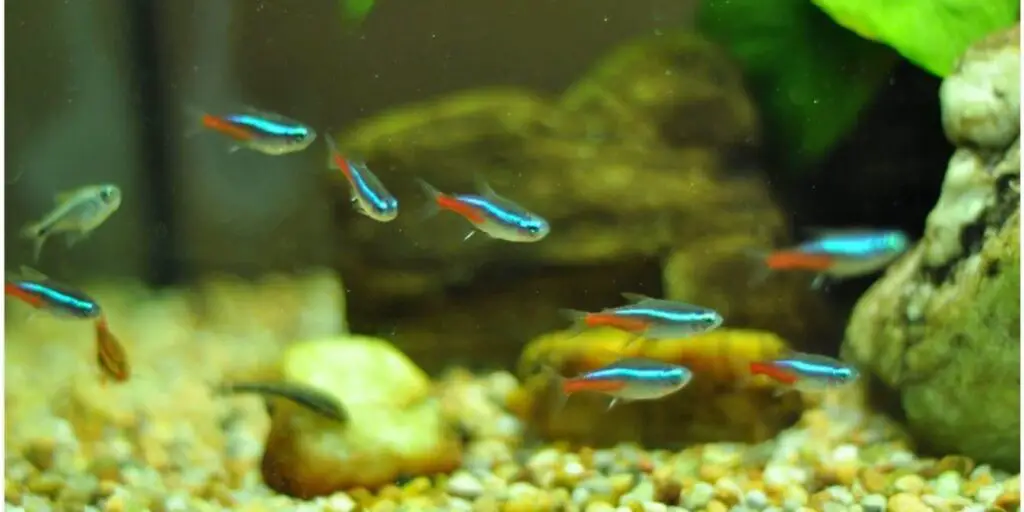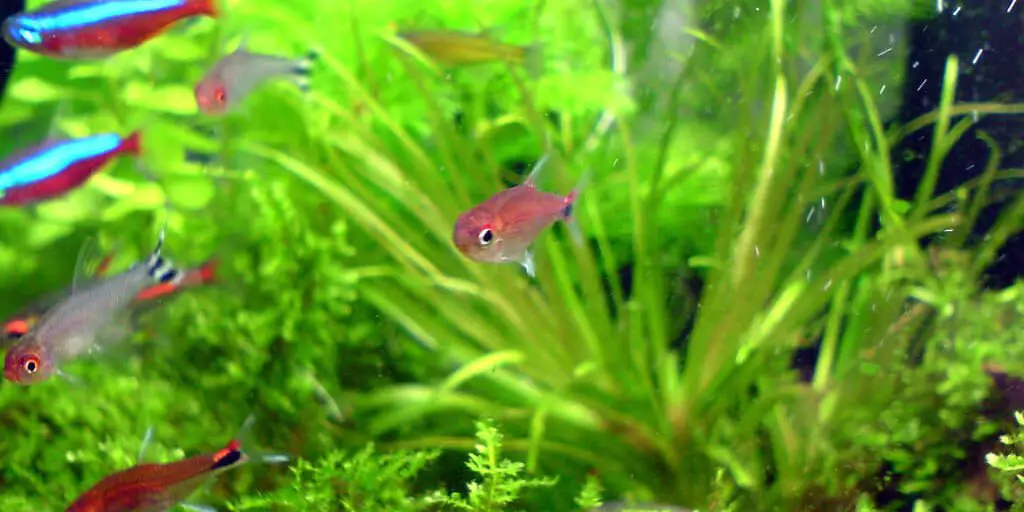You love your fish, say Tetra, dearly and the fish loves you back too. However, that’s not how it works. You need to put in the effort to make your fish happy. Let’s see how keeping the physically brilliant, interactive, social, and peaceful species, i.e; Tetra, happy can be mastered.
Popular amongst the home aquaria, Tetra fish is hardy in nature. It has certain requirements that you as a hobbyist must fulfill. If you fulfill the requirements there is no doubt that you fish will be happy and healthy in your tank.
The Four-step process to keep your tetra fish happy and healthy are:
- Make Sure To Keep Your Tetra Comfortable (get a decent size tank)
- Maintain You Tank and Tank’s Environment (Daily, Weekly, and Monthly)
- Feed Your Tetra Quality Food, and
- Monitor Your Fish and Tank
Let’s know your Tetra better and what it actually means to keep your fish happy first.
What does it mean to keep your fish happy?
As a hobbyist or a beginner, having fish makes you happy. As a result, if your fish is satisfied and healthy, it, in turn, makes you happy too. This means that your fish has:
- Enough adequate space
- Stable water parameters to thrive in
- A clean environment, and
- A proper diet
You can say you have put in an effort to keep your fish happy and healthy if you make sure that all the above criteria are fulfilled.
Tetra Fish Generalization
Tetra fish is a small freshwater characiform fish that originated from Africa, Central America, and South America. The fish’s name ‘Tetra’ is derived from their unique and impressive set of teeth. With around 150 species of Tetra with variations in appearance like color, size, etc., the fish is better identified by the presence of an adipose fin present in between the dorsal and caudal fins.
Tetra fish are from tropical climates and are inhabitants of black water. Most of the Tetra live in clean yet heavily vegetated areas under dim lighting and have a lifespan anywhere from 3-10 years. Hardy in nature, these active fish are generally mid-dwellers.
Some of the most common Tetra among aquarists are Neon Tetra (Paracheirodon innesi), Cardinal Tetra (Paracheirodon axelrodi), Serpae Tetra (Hyphessobrycon eques), Diamond Tetra (Moemkhausia pitteri), and Glowlight Tetra (Hemigrammus erythrozonus). Usually, Tetra is captively bred, however, certain breeds are not frequently available. Peaceful in nature, they go around pretty well with similar sized tank mates like Guppies, Cordorarys, rasboras, and a few invertebrates. Tetra is a non-picky eater and will accept food from fresh to frozen food.
Tetra fish range from a price of $2-$10 per fish. Certain breeds of Tetra is also premium bred, which has increased performance and add a little more cost.
The 4 Step Process To Keep Tetra Happy and Healthy?
Not all fish have the same requirements. Fish differ in their nature, habitat, diet, appearance and these factors account in keeping your fish happy. Here we have a brief guideline on how you can keep Tetra fish happy.
Step 1: Make Sure To Keep Your Tetra Comfortable
Now, we know that Tetra comes from the wild, and having them captively bred makes them adaptable. However, it is very important to make your fish feel comfortable. For this, firstly, you need to create an environment for your fish to live in. Secondly, there are a lot of ways you can put into comforting your Tetra.
Space
Tetra is an active fish and is a fast swimmer. Giving space to any Tetra is mandatory for them to thrive. Ease of space will help a Tetra to feel like home while keeping up the enthusiasm in exploration.
Since Tetra is schooling and shoaling species, it is obvious that you will have at least 6 Tetra in your aquarium. As per my experience, it is better to have more space in the aquarium than following the general rule of thumb. A 20-gallon tank is a minimum requirement for small species of Tetra, while the capacity will increase with the size and the number of your Tetra. The community and sociable fish to be kept with other species would require more space. So, if you have a Tetra and things are not working out, try providing your Tetra some space.
Therefore, it’s essential to attempt to replicate their natural environment on a smaller scale to the best of your abilities, while keeping in mind your budget as well as any space limitations.
Aquarium Set-Up
The natural habitat of Tetra fish is vegetated areas with less current. Having been originated in blackwater with tannins and leaflitter, Tetra lives in clean water. An aquarium with plants like floating plants and bed plants is the best replication of the natural environment for a Tetra. Having floating plants give Tetra a sense of comfort. Plants in the tetra’s aquarium can be broad-leaved or narrow-leaved, the fish have their own preferences. For example, bloodfin tetras prefer broad-leaved plants.
Tetra is hardy as well as a peaceful fish. It enjoys the company of other fish like danios, corydoras, discus fish, most livebearers and some peaceful dwarf cichlids, and is sociable.
Your Tetra will be more than happy to have similar-sized tankmates that are peaceful in nature.
Environment
Trying to replicate the actual habitat of Tetra can help ease the stress. A dim-lit environment with a sandy substrate, decors like driftwood, dried almond leaf, and a few hiding spots is what matters to Tetra. Hence, this will definitely keep your Tetra happy without you needing to spend a fortune.
Step 3: Have Your Tank Well Maintained
Maintaining a tank is no easy task. You need to have a stable water condition for your Tetra. This includes parameters like acidity, hardness, regular water changes, and so on. A well-maintained tank is a home for a happy fish.
Water Parameters
Water parameters like pH level, hardness, temperature, etc are inconsistent. They keep on changing naturally and every time you perform water changes.
Although Tetra prefers an acidic environment, some Tetra can survive in neutral water as well. Maintaining a precise measure here in terms of pH is important because a slight change can affect your Tetra by a lot more than you can imagine.
Water hardness for Tetra can be maintained with the help of natural as well as artificial ways. My article on “Water Parameters for Tetra Fish: Stable Water Condition” explains how you can do so.
Tetra fish prefer a warmer temperature. IF you don’t happen to have one in cold temperature, then be sure to get a thermometer!
Water Changes
Water changes are of the utmost importance for a fish who likes clean water. Partial water changes from 20-30% each week must be done in order to have a clean environment. Regular water changes help maintain the debris and toxins.
Cleaning
Cleaning the tank once in a while along with vacuuming substrate helps keep the algae in control. There are filters with different efficiency and flowrate available in the market. This can help generate beneficial bacteria in the tank. A siphon can be a tool to clean the aquarium floor with ease and safety.
Step 3: Feed Your Tetra Quality Food
Tetra is popular for being bright and multi-colored. This coloration of the fish in an aquarium can fade over time because of illness or not getting enough nutrients.
A well-fed Tetra is a happy Tetra. They accept high-quality flaked food, pellets, frozen worms, etc. readily. Make sure to have a variation in their diet as it also keeps them from being nutrient-deprived and maintains a healthy color.
Step 4: Monitor Your Fish and Tank
It’s always good to monitor the tank on a daily basis. By doing so, you can easily detect if something is off about the tank or the fish. You can tell when your Tetra is sick or when the water needs a change. We all know, preventing a bad situation is always better. As a result, monitoring your tank will also help create a level of trust and communication with your Tetra even if you may not see it.
Some Signs of Tetra being sick
Ich and fin-rot are the common diseases a Tetra could be prone to. If you notice the following behavior, please be sure to confirm the disease and treat the ill fish.
- Restless behavior
- The appearance of cyst-like structures on the skin
- Being unable to balance
- Bloating
- The irregular pattern of swim
- The appearance of worms from the fish gills
If you have your Tetra treated beforehand, it will create a safe environment for other Tetra and fish in your aquarium.
Signs that your Tetra is happy
It isn’t necessary that your Tetra will smile back at you. Firstly, that’s because it is not possible, and secondly because it’s definitely visible if a fish is happy or not. Tetra is a fish having a long life. So, it’s important you take care of your Tetra from the very beginning. Some visible traits your Tetra can show when they’re happy are:
- The fish are active and swim throughout the entire tank.
- The fish respond to you when you interact with them.
- They swim to the surface during feeding time and eat regularly.
- The fish have a perfect deep contrast to them with colorful scales.
- They are not always hiding therefore are roaming freely.
- The fish look healthy and show healthy traits like the expansion of gills regularly.
Conclusion
Tetra does not require a lot of effort and is humble enough to have you look at them daily for a few hours. This is what has made this beautiful species so popular in home aquaria. Since your Tetra has made you happy by staying, let them also feel the joy in 4 simple steps given above.
I hope this article has helped you show your Tetra’s status and how you can improve on it further.
